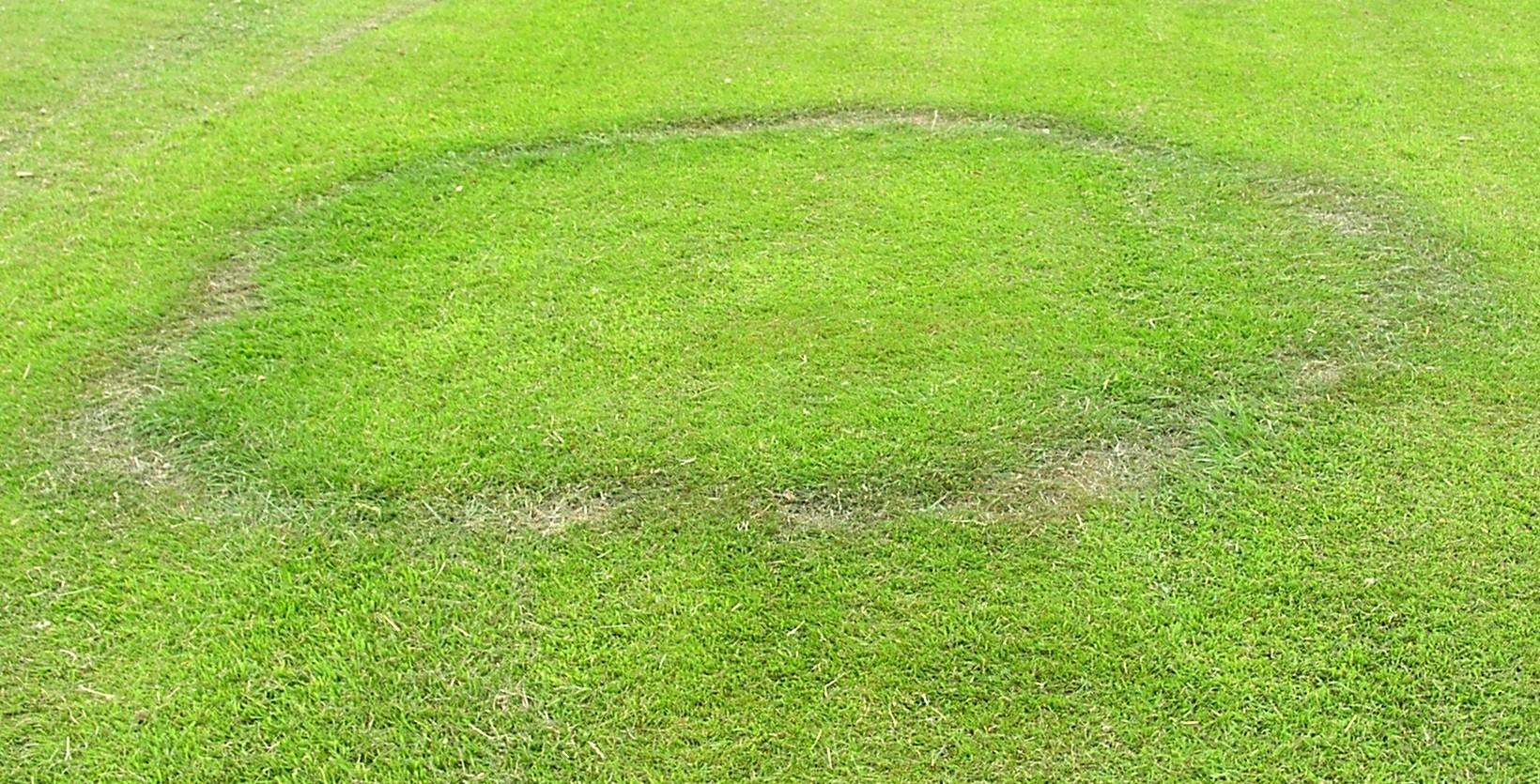Like with all things beauty is in the eye of the beholder. I don’t mind the look of fairy rings, and I like that they give us a little free nitrogen (even if a little unevenly distributed).
To others they are a stain on a playing surface, and in some situations they can affect turf cover and quality of play.
Some scary statistics first to ease us in:
There are records of fairy rings in turf up to 100 years old and several hundred meters in diameter.
The largest organism on earth, stretching 5.5 kilometers, and may be up to 2000 years old is Armillaria solidipes (Honey fungus).
This is not some massive great mushroom on the surface, its almost entirely underground. A huge network of associated fungal hyphae stretching out in search of food.
Luckily this is not known to be a fairy ring species, though the list of fairy ring species is extensive.
Also luckily we don’t need to learn the list of fungi species which cause fairy rings, its better to learn the different symptom groups:
Types of Fairy ring:
- ‘Type 1‘ – Some dead grass
- ‘Type 2‘ – Ring of stimulated growth ‘greened up’
- ‘Type 3‘ – Fruiting bodies (mushrooms) only, in a ring also
- (bonus one) ‘Superficial fairy rings‘ or ‘thatch fungi’
What’s the issue?
Aesthetics to one side (I’m not dismissing it as it can have a huge visual impact on a playing surface), the actions of the fungi responsible for making Fairy rings just going about their every day lives can impact a playing surface.
Fungi are very good at what they do. For soil bound fungi that’s generally breaking down organic matter.
If you or I want to eat something we drop it into our stomachs and a collection of enzymes break it down into usable parts, the rest is eventually lost as waste.
Fungi do all this externally, so their hyphae produce enzymes and other substances next to organic matter, that breaks it down, they absorb the bits they want and the rest is waste.
Much like when we see ducks or geese hanging out on fine, and especially lean (nutrition) turf, we see flushes of green where that nitrogen rich waste has soaked into the soil.
Beyond looks, this can affect play in a number of ways.
- Fertility stimulated turf grows faster/thicker than lean turf. This can affect smoothness of ball roll depending on cutting interval and other mitigating factors. You could do this without Fairy ring, if you drew a circle with more concentrated fertiliser on turf.

You have options to manage the different rates of growth:
- Increase rate of mowing – cutting more will keep turf heights more consistent
- Even out nutrition, applying additional fertility would even out the difference
- Suppress vertical growth with Primo Maxx II
You can cover it visually with turf pigment technologies like Ryder, but that’s not going to help with the smoothness issue.
Type 1 fairy ring means some level of turf loss.
This is generally caused by the build up of the enzymes and other substances produced by the fungi (including dead and dying fungi) which can be hydrophobic.
This can lead to turf loss around the active area of the fairy ring, where the turf simply succumbs to drought, as even though its irrigated or hand watered the soil isn’t rewetting in that area due to hydrophobicity.
Thanks to the STRI for this image, we can see turf loss at the edges.

Some fungi species can produce compounds that are toxic to turf and so the soil in that area becomes inhospitable over time.
More generally its a hydrophobicity issue so it’s important to get into a good quality wetting agent program to help manage the symptoms and avoid turf loss.
Type 3 fairy ring
Types 1 & 2 can have fruiting bodies (mushrooms) along with the other symptoms but type 3 have only the mushrooms and no turf loss or ‘greening up’.

Pretty disruptive to ball roll if its hits a big mushroom, but nothing a mower can’t handle.
You can read more about fairy ring here on the Syngenta information page.
Glenn’s previously done a fairy ring blog here and one here specifically on fairy rings in cricket.





Michael Garvan
Are fairy rings preventable!
2023-07-29 09:07:05
Sean Loakes
Hi Michael, Thanks for the comment. Being that fairy rings can live so long, are caused by many different fungi species and can spread via spores carried on the wind, fairy rings are very challenging to prevent. The symptoms can be managed so that they are less/not visible at the surface, and tong term treatment programs can reduce the incidence of them also. But they remain one of the most difficult diseases of turf to manage. Thanks Sean
2023-08-14 18:40:17